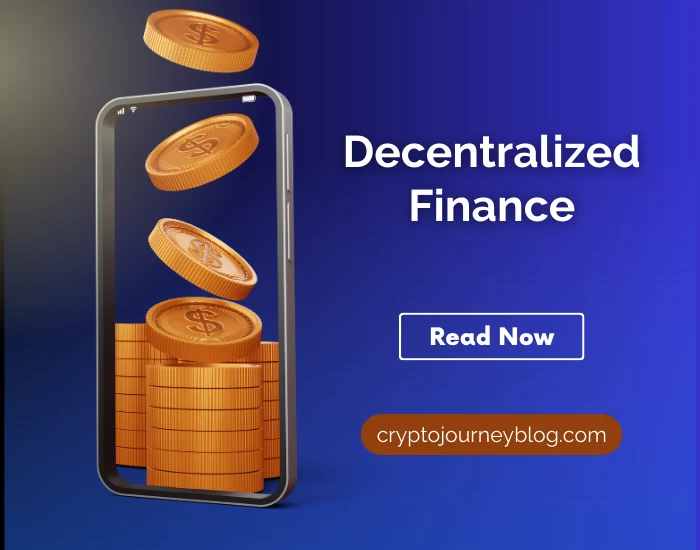
DeFi is a revolutionary concept that has been gaining attention. It is a decentralized financial system, where individuals have power over their resources and manage financial activities without the help of intermediaries.
DeFi utilizes blockchain technology to guarantee transparency, safety, and immutability for transactions. By using smart contracts, users can borrow, lend, trade, and earn interest on digital assets directly from their wallets.
The decentralized nature of DeFi makes financial services available to everybody with an internet connection. To get the most out of DeFi, there are some tips to follow. Firstly, educate yourself on DeFi platforms and protocols. Knowing how they work and associated risks will aid in making the right decisions when participating in DeFi activities.
Next, diversify investments across different DeFi projects. This will reduce the risk of losses due to unforeseen events or vulnerabilities. Lastly, stay up to date with the latest news in the DeFi ecosystem. Knowing the new projects can help uncover great opportunities and avoid scams.
Understanding the Benefits of DeFi
DeFi, otherwise known as Decentralized Finance, brings a wealth of benefits that are totally revolutionizing the financial world. Here’s what it offers:
- Accessibility: No banks needed – DeFi gives anyone with an internet connection the ability to take part in financial activities.
- Financial Inclusion: People who don’t have access to traditional banking services can use DeFi for managing money and investing.
- Transparency: Blockchain technology ensures transparent and unchangeable transactions, giving users complete visibility over their funds and reducing the risk of fraud.
- Security: Decentralized networks protect users from attacks and data breaches that come with centralized systems.
- Efficiency: DeFi cuts out paperwork and streamlines financial operations for faster results.
- Innovation: Open protocols encourage developers to create new apps, leading to a wide range of novel financial products.
Plus, DeFi lets people earn interest on their crypto assets by lending or providing liquidity.
DeFi’s growth has been huge in the past year – CoinGecko reported that the total value locked in DeFi protocols surpassed $50 billion in early 2021. This shows its huge popularity and adoption in the crypto space.
Thanks to decentralized finance, we’re seeing a more inclusive and efficient global economy emerge.
How DeFi Works: Explaining the Key Concepts
DeFi, which stands for Decentralized Finance, is powered by blockchain technology and smart contracts. It shatters traditional financial systems by ditching middlemen and offering open access to financial services. Here’s how DeFi works:
- Autonomy: DeFi puts users in full control of their funds, without the need for centralized organisations like banks or governments. Smart contracts automate transactions based on pre-set conditions.
- Interoperability: DeFi applications are built upon existing blockchain platforms, such as Ethereum, creating a smooth ecosystem for protocols and services to interact with each other. This paves the way for borrowing, lending, and trading of digital assets in the DeFi space.
- Liquidity Provision: DEXs (Decentralized Exchanges) provide liquidity through individuals who lock their funds in liquidity pools. These pools let anyone trade assets directly, without waiting for counterparties, leading to quicker and more efficient transactions.
- Risk Management: To protect users from asset thefts or contract failures, insurance protocols are used in DeFi platforms. These protocols are run by community consensus, keeping participants in the decentralized finance ecosystem secure.
- Governance: DeFi projects use governance tokens to give users a say in how the system works. This could include decisions about upgrades, token distributions, and protocol changes, thus encouraging a community-driven approach.
Notably, DeFi brings new chances to people unable to access traditional financial services because of institutional restrictions or geographical boundaries.
Fun Fact: CoinGecko’s Q2 2021 report states that, in June 2021, the total value locked (TVL) in DeFi hit an all-time high of $87 billion.
The Role of Decentralized Exchanges (DEXs)
Decentralized Exchanges (DEXs) are pivotal to decentralized finance. They enable trading of digital assets without intermediaries or central authorities. Let’s look at their functions and advantages.
DEXs allow peer-to-peer trading, so users can directly exchange cryptocurrencies. This removes the need for banks or brokers, reducing costs and making it more efficient. Plus, DEXs offer privacy and security. As users control their funds throughout the process, there’s no risk of fraud.
Below are the key functions and advantages of DEXs:
| Functions | Advantages |
|---|---|
| Peer-to-Peer | Direct exchange between individuals |
| Privacy & Security | Users maintain control over their funds |
| Low Fees | Elimination of intermediaries reduces transaction costs |
Furthermore, some DEXs offer advanced trading tools. Limit orders and decentralized margin trading empower users with more options when trading. As DEXs use blockchain technology, they foster trust and transparency.
However, DEXs have their limitations. Liquidity can be lower than centralized exchanges. But, as DeFi grows, this issue is being addressed.
DEXs revolutionize traditional finance. They give users financial autonomy and security. For example, Uniswap – one of the most popular DEXs – had a trading volume of $59 billion in January 2021 (CoinDesk).
DeFi Lending and Borrowing Platforms
DeFi lending and borrowing platforms enable users to borrow and lend crypto without the need for banks. Smart contracts on the blockchain make transactions secure and transparent.
Compound is one such platform. Users can deposit Ethereum or DAI and earn interest on their assets, which can also be used as collateral. Interest rates are set by supply and demand.
Aave is another platform, offering features such as flash loans. Flash loans don’t require collateral, and they’ve gained attention for arbitrage and yield farming.
Other platforms offer different features, e.g. fixed interest rates or customizable loan parameters.
However, DeFi comes with risks, such as smart contract vulnerabilities and liquidity risks.
Recently, CoinDesk reported that the total value locked in DeFi had reached over $100 billion in August 2021. This shows DeFi’s growing acceptance in the crypto ecosystem.
Yield Farming and Staking in DeFi
Yield farming and staking are two key activities in Decentralized Finance (DeFi). Yield farming involves providing liquidity to decentralized exchanges or protocols and getting rewards. Staking is when you lock up crypto assets to support the network and get staking rewards.
The following table provides an overview of yield farming versus staking:
| Yield Farming | Staking | |
|---|---|---|
| Purpose | Earn rewards by providing liquidity | Lock-up cryptos to support network |
| Risks | High due to market volatility & smart contracts | Low, since assets are locked for period |
| Rewards | Varied opportunities with potential higher returns | Predictable returns based on amount staked |
| Flexibility | More flexible with options to switch protocols | Less flexible due to lock-up period |
| Complexity | Requires research and understanding of protocols | Relatively simpler process |
Yield farming needs constant monitoring and adjusting strategies based on market conditions. On the other hand, staking is more straightforward with predictable returns.
Chris, an early adopter of DeFi, tried yield farming. He researched protocols and selected one with attractive yields. He deposited assets into the protocol’s liquidity pool and started earning rewards.
One day, Chris noticed a sudden drop in earnings. He sought advice from experienced community members. They found out that a new protocol was offering higher rewards.
Chris moved his assets to the newer opportunity. His returns multiplied.
Chris’ experience shows the potential of yield farming and how important it is to stay up to date. It’s a reminder that being well-informed and open to change can lead to success in DeFi.
Security and Regulatory Challenges in DeFi
The emergence of decentralized finance (DeFi) has brought about security and regulatory challenges. These issues have the potential to affect the stability and progress of DeFi, so proactive measures must be taken. The table below outlines the main security and regulatory challenges in DeFi:
| Security Challenges | Regulatory Challenges |
|---|---|
| Smart Contract Risks | Compliance with KYC/AML |
| Flash Loan Exploitation | Jurisdictional Conflicts |
| Centralized Oracle Exploits | Investor Protection |
Smart contracts are a large concern since vulnerabilities can lead to hacking and financial loss. Flash loan exploitation is also on the rise, where attackers exploit temporary loans to manipulate prices and gain profits. Centralized oracle exploits are another issue as they can result in external data manipulation.
On the regulatory side, KYC and AML must be followed. In addition, differing regulations across countries create jurisdictional conflicts. Investor protection is a further concern as DeFi platforms develop.
In spite of these difficulties, DeFi is still growing. Innovative solutions such as decentralized oracles and improved smart contract auditing are helping to make progress. According to CoinTelegraph, $16 billion had been locked in DeFi protocols by November 2020. This shows the amazing growth of the sector despite security and regulatory challenges.
The Future of DeFi: Opportunities and Challenges
The future of DeFi is filled with exciting possibilities and major difficulties. Decentralized finance is evolving, with immense potential for financial inclusion and innovation. But, security, regulatory, and scalability issues need to be handled.
Let’s check out a table of the opportunities and challenges for the future of DeFi:
| Opportunities | Challenges |
|---|---|
| Financial Inclusivity | Security Risks |
| Innovation | Regulatory Uncertainty |
| Efficiency | Scalability Issues |
| Transparency | User Education |
| Accessibility | Interoperability |
One special point to consider is financial inclusivity. DeFi may offer financial services to people who have been excluded from regular banking systems. With blockchain tech, individuals can get loans, invest, and earn interest without relying on a central body.
For the future of DeFi, it’s essential to tackle security risks through strong protocols and auditing. Standardizing security can help protect funds and build trust in the system.
Also, regulatory frameworks must be created to give clarity for DeFi platforms and users. This will ensure conformity with present rules while enabling progress in the area. Cooperation between players and regulators can bring balanced regulations that enable growth and reduce potential threats.
Moreover, enhancing scalability is vital for the sustainable growth of DeFi. Beating current limits will let more people join decentralized finance without worrying about congestion or high transaction costs.
Conclusion: Embracing the Potential of DeFi
The potential of DeFi to revolutionize traditional finance systems is immense! Blockchain technology and lack of intermediaries promote greater accessibility, transparency, and efficiency. Let’s explore the exciting opportunities that come with DeFi, such as:
- Financial Inclusion: People without access to traditional banking can now access various financial activities, like borrowing, lending, and investing.
- Transparent and Trustworthy: Transactions are transparent and secure, reducing chances of fraud or manipulation.
- Programmable Money: Smart contracts allow for automated execution of transactions based on predetermined conditions, providing flexibility and efficiency.
- Global Reach: DeFi is not restricted by geographical boundaries, and thus enables cross-border transactions and global financial integration.
DeFi is still in its early stages and has scalability and regulatory issues. However, with continued growth and innovation, these can be addressed.
It is also noteworthy that DeFi grants individuals control over their finances, with cryptocurrencies like Bitcoin and Ethereum as its foundation. This is a paradigm shift in how people interact with money.
So let us take advantage of DeFi – an amazing technology that is changing the financial scene.
Frequently Asked Questions
u003cstrongu003e1. What is DeFiu003c/strongu003e
DeFi, short for Decentralized Finance, refers to a rapidly emerging trend in the financial industry where traditional financial services are built and offered on decentralized blockchain platforms. It aims to provide an open, permissionless, and inclusive financial system accessible to anyone with an internet connection.
u003cstrongu003e2. How does DeFi work?u003c/strongu003e
DeFi utilizes the power of blockchain technology to remove intermediaries and create peer-to-peer financial applications. These applications run on smart contracts, which are self-executing contracts with the terms of the agreement directly written into the code. Users can interact with DeFi platforms to borrow, lend, trade, invest, and more, all without relying on centralized institutions.
u003cstrongu003e3. What are the advantages of Deu003c/strongu003eFi?
DeFi offers numerous advantages, including increased financial inclusivity, greater transparency, enhanced security, reduced costs, and improved efficiency. It allows individuals to access financial services regardless of their location or background, while also removing the need for intermediaries and reducing the associated fees.
u003cstrongu003e4. What are some popular examples of DeFi applicationsu003c/strongu003e?
Some popular DeFi applications include decentralized exchanges (DEXs) like Uniswap, lending platforms like Aave, and stablecoins like Dai. These platforms enable users to trade assets directly with other users, lend or borrow cryptocurrencies, earn interest on their holdings, and more, all while maintaining control over their funds.
u003cstrongu003e5. Is DeFi safe?u003c/strongu003e
While DeFi offers numerous benefits, it’s important to note that it also presents certain risks. Smart contract vulnerabilities, hacks, and market volatility are some of the risks associated with DeFi platforms. Users should conduct thorough research, exercise caution, and consider factors like platform security, audits, and user reviews before engaging in DeFi activities.
u003cstrongu003e6. How can I get started with DeFi?u003c/strongu003e
To get started with DeFi, you’ll need a digital wallet that supports decentralized applications (DApps). You can choose from various wallet options like MetaMask or Trust Wallet. Once you have a wallet, you can explore different DeFi platforms, transfer funds, and interact with the applications of your choice. It’s recommended to start with small amounts and familiarize yourself with the platforms before engaging in larger transactions.



